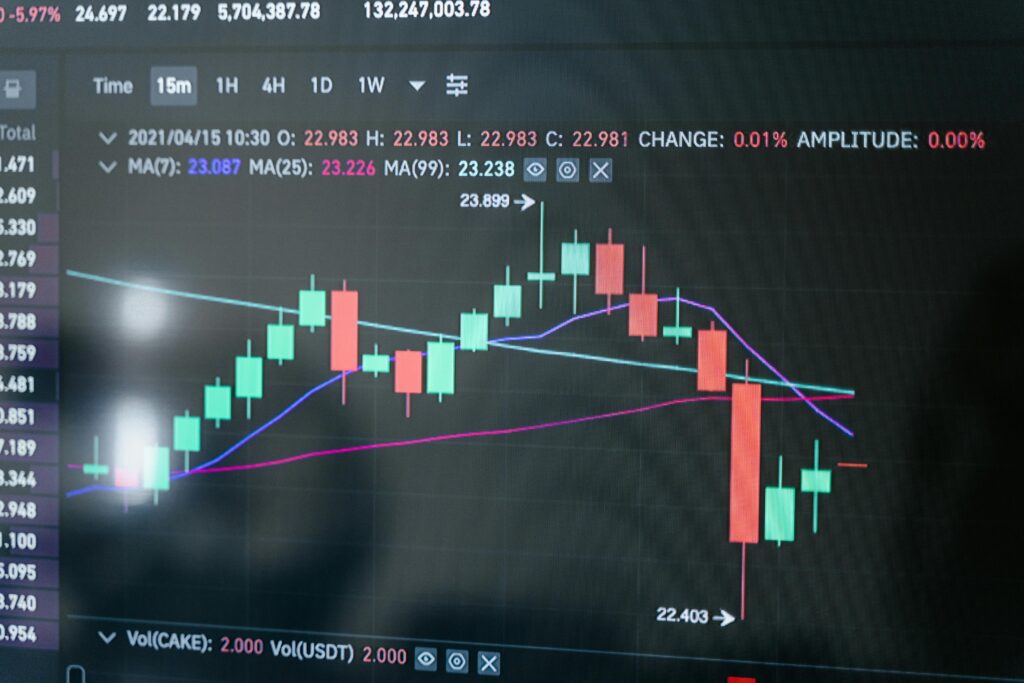The cryptocurrency market has been witnessing increased volatility, and Bitcoin’s recent price action has been a reflection of broader economic concerns. As Bitcoin drops below $57k, it reversed its earlier gains, a sign that the market is struggling to maintain momentum. Investors are continuing to adopt a sell-on-rise approach, further pressuring Bitcoin’s price. This article will explore the factors contributing to Bitcoin’s retracement, the potential implications for both the crypto and traditional financial markets, and what lies ahead for investors.

1. Bitcoin’s Price Action: The Fall Below $57K
Bitcoin, the world’s leading cryptocurrency by market value, saw the price of bitcoin drops below $57k on Thursday, shedding more than 2%. This came after the coin failed to hold above $58,000, despite showing a brief bounce the day before. Bitcoin’s price peaked above $65,000 on August 25, but has since been on a bitcoin drops below $57k, characterized by brief, shallow price recoveries.
1.1 Sell-on-Rise Mentality
The current sell-on-rise action is a major factor in Bitcoin’s inability to sustain upward momentum. Investors appear to be offloading their holdings whenever Bitcoin experiences a short-lived price bump, further intensifying the bearish sentiment.
1.2 A Historical Perspective
Looking at Bitcoin’s price history, this kind of retracement is not uncommon. During past bull cycles, Bitcoin has also experienced significant corrections before resuming its upward trend. However, the current economic uncertainties are adding another layer of complexity to the equation, as broader market risks are weighing heavily on investor sentiment.
2. Economic Concerns Fueling Crypto Weakness
The U.S. economic outlook is currently under significant scrutiny, and this has spilled over into the cryptocurrency market. The fear of a potential recession is growing, and this is causing investors to reduce their exposure to high-risk assets, including Bitcoin.
2.1 Impact of Economic Reports
Recent U.S. economic data has not been promising, further fueling concerns about the health of the economy:
- The Job Openings and Labor Turnover Survey (JOLTS) for July showed a decline in job openings to 7.67 million, missing expectations of 8.1 million.
- The ISM Manufacturing PMI for August revealed continued contraction in U.S. manufacturing activity, adding to fears of a broader economic slowdown. Bitcoin drops below $57k.
These reports are leading many investors to question the resilience of risk assets, including cryptocurrencies. Bitcoin, which has been seen as a hedge against traditional markets in the past, is now moving in line with broader market fears.
3. Federal Reserve’s Influence on Bitcoin Prices
Bitcoin’s current price action is also being influenced by expectations surrounding the Federal Reserve’s monetary policy. Investors are speculating that the Federal Reserve may be forced to cut interest rates to stave off a potential recession, but this has not yet provided a solid floor for price of Bitcoin drops below $57k.
3.1 Interest Rate Expectations
Many market participants are now betting that the Federal Reserve will announce rate cuts at its next meeting. However, the size and timing of these cuts remain unclear. While some expect a modest 25-basis point cut, others believe that worsening economic data could prompt a more aggressive 50-basis point reduction.
Despite these expectations, Bitcoin has yet to benefit from the potential rate cuts, suggesting that broader economic concerns are outweighing the bullish implications of lower interest rates.
3.2 The Fed’s Beige Book
Adding to the uncertainty is the Federal Reserve’s Beige Book, which highlighted a slowing U.S. economy and a slackening labor market. This report was the most pessimistic in recent memory, further fueling concerns about a looming recession and the potential for prolonged economic weakness.

4. Correlation Between Bitcoin and Traditional Markets
One of the most interesting dynamics in the current market is Bitcoin’s increasing correlation with traditional risk assets. While Bitcoin has long been touted as a store of value and inflation hedge, its recent price action suggests that it is behaving more like a traditional risk asset.
4.1 Bitcoin as a Risk Asset
Analysts, including Alex Kuptsikevich, have pointed out that Bitcoin’s weakness could serve as a red flag for the broader financial markets. If Bitcoin, which has been viewed as a speculative risk asset, is struggling to maintain its value, it could signal that traditional markets may soon face similar struggles.
4.2 Lack of Support from Dollar Weakness
Additionally, Bitcoin’s recent struggles have occurred despite weakness in the U.S. dollar. Typically, a falling dollar provides a tailwind for assets like Bitcoin, as investors seek alternatives to traditional fiat currencies. However, this correlation has not played out recently, further complicating the outlook for Bitcoin.
5. Cryptocurrency Market Performance: Broader Weakness
Bitcoin’s recent decline is not an isolated incident, as other major cryptocurrencies have also seen their prices stagnate or fall. Cryptocurrencies like Ether (ETH), XRP, and TON have also erased their recent gains, with many trading largely unchanged on a 24-hour basis.
5.1 Broader Crypto Market Trends
The CoinDesk 20 Index (CD20), which tracks the broader cryptocurrency market, showed only a modest 0.9% gain recently. This suggests that the weakness in the market is not confined to Bitcoin but is affecting the entire digital asset space.
5.2 Decreased Liquidity
Another factor contributing to the crypto market’s weakness is decreased liquidity. As economic concerns mount and investors become more risk-averse, many are pulling their money out of the market, leading to lower trading volumes and increased price volatility.Learn How to solve crypto challenges.
6. Analyst Predictions and Future Outlook
Several market analysts have weighed in on the current situation, offering differing views on where Bitcoin might head next. While some see the recent weakness as a temporary setback, others warn that the worst may not be over yet. Bitcoin drops below $57k.
6.1 Valentin Fournier’s Perspective
According to Valentin Fournier, an analyst at BRN, the growing economic risks mean that investors should consider reducing their exposure to Bitcoin in the near term. Fournier highlighted the disappointing economic reports as reasons for caution, recommending that investors wait for a better entry point before increasing their Bitcoin holdings.
6.2 Alex Kuptsikevich’s Red Flag Warning
On the other hand, Alex Kuptsikevich from FxPro warned that Bitcoin drops below $57k recent weakness could be a red flag for the broader market. If Bitcoin continues to struggle, it could signal that traditional markets are next in line for a correction.
Kuptsikevich also pointed out that Bitcoin’s recent failure to hold above its 200-day moving average could trigger further sell-offs in the short term.
7. What Lies Ahead for Bitcoin and Cryptocurrencies
Looking ahead, Bitcoin and the broader cryptocurrency market face several potential challenges, but also opportunities. As the U.S. Federal Reserve prepares to make its next rate decision, the crypto market will likely remain highly sensitive to any new economic data.
7.1 Potential for a Rebound
While Bitcoin’s price has been under pressure recently, it’s important to remember that the cryptocurrency market has proven to be highly resilient in the past. Any signs of economic stabilization or clarity from the Federal Reserve could provide the catalyst needed for a rebound in Bitcoin’s price.
7.2 Long-Term Outlook
In the long term, many analysts remain bullish on Bitcoin, citing its potential as a store of value and a hedge against inflation. The continued growth of institutional interest in digital assets, coupled with the expansion of blockchain technology, could drive Bitcoin’s value higher over time. Over the long term bitcoin drops below $57k.

Conclusion
Bitcoin’s drops below $57K amid economic concerns highlights the delicate balance between risk and reward in today’s market. With sell-on-rise sentiment dominating and broader economic uncertainties weighing on investor sentiment, Bitcoin’s future in the near term remains unclear. However, with a potential Federal Reserve rate cut on the horizon and a long-term bullish outlook for digital assets, Bitcoin may soon find the support it needs to resume its upward trajectory. Bitcoin Drops below $57k. For now, investors should remain cautious, monitor key economic data points, and be prepared for further volatility in the cryptocurrency market. We have provided all information regarding bitcoin drops below $57k.